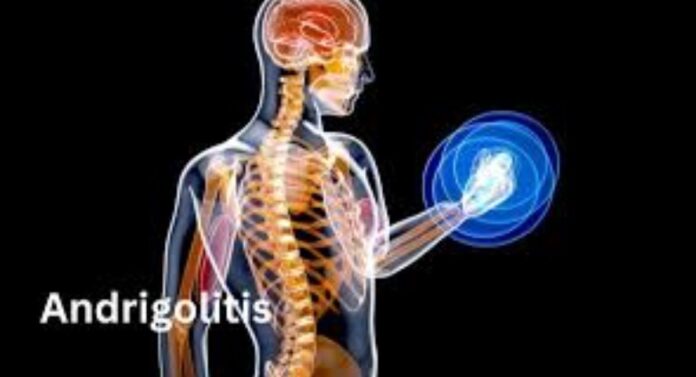Introduction
Andrigolitis is a rare and complex medical condition that many people have not heard of. This article will provide a clear, detailed explanation of andrigolitis, including its symptoms, causes, and treatment options. We aim to make this information accessible and straightforward.
What is Andrigolitis?
Andrigolitis is a condition characterized by inflammation in the androgens, which are hormones that regulate male traits and reproductive activity. Though it primarily affects males, the condition can also influence other aspects of health. The term combines “andro” (referring to male hormones) and “itis” (indicating inflammation).
Symptoms
Its symptoms can depending on the severity and the individual’s overall health. Here are some common signs to look out for:
| Symptom | Description |
| Pain | Persistent or intermittent pain in the affected area. |
| Swelling | Noticeable swelling in the area affected by inflammation. |
| Hormonal Imbalance | Changes in hormone levels, leading to symptoms like mood swings. |
| Fatigue | Unusual tiredness and lack of energy. |
| Reduced Libido | Decreased interest in sexual activity. |
| Changes in Skin | Alterations in skin texture or appearance in affected areas. |
Causes of Andrigolitis
Understanding the causes of it can help in preventing and managing the condition. The main causes include:
- Infections: Bacterial or viral infections can trigger inflammation in the androgens.
- Autoimmune Disorders: Conditions where the immune system attacks healthy tissues can lead to this.
- Genetic Factors: Some individuals may have a genetic predisposition to developing this condition.
- Hormonal Imbalances: Disruptions in hormone levels can cause inflammation.
- Trauma or Injury: Physical injury to the area can result in inflammation and andrigolitis.
Diagnosis of Andrigolitis
Diagnosing andrigolitis involves several steps. Healthcare professionals will:
- Medical History Review: Discussing the patient’s medical history and symptoms.
- Physical Examination: Checking for signs of inflammation and other related symptoms.
- Laboratory Tests: Conducting blood tests to measure hormone levels and identify any infections.
- Imaging Studies: Using ultrasound or MRI to visualize inflammation and assess the affected areas.
Treatment Options for Andrigolitis
Treating andrigolitis depends on the underlying cause and severity of the condition. Common treatment options include:
| Treatment | Description |
| Medications | Anti-inflammatory drugs and antibiotics may be prescribed. |
| Hormone Therapy | Adjusting hormone levels to reduce inflammation. |
| Lifestyle Changes | Implementing diet and exercise changes to support overall health. |
| Physical Therapy | Exercises and therapies to improve function and reduce pain. |
| Surgery | In rare cases, surgical intervention may be necessary. |
Preve ntion Strategies
Preventing andrigolitis involves maintaining a healthy lifestyle and being mindful of potential risk factors. Consider these strategies:
- Maintain Hormonal Balance: Regular check-ups and hormone level monitoring.
- Healthy Diet: Eating a balanced diet to support overall health.
- Regular Exercise: Engaging in physical activity to boost immunity and general well-being.
- Avoiding Injuries: Taking precautions to prevent trauma to the affected areas.
Living with Andrigolitis
Living with andrigolitis can be challenging, but managing the condition effectively is possible. Key aspects to consider include:
- Follow-Up Care: Regular visits to a healthcare provider to monitor progress and adjust treatment.
- Support Systems: Connecting with support groups and counseling can help manage the emotional aspects of the condition.
- Education: Learning about the condition and its management helps in coping with symptoms and making informed decisions.
FAQs
Q: Is it a common condition?
A: No, it is relatively rare and not widely known. It requires specific medical attention for accurate diagnosis and treatment.
Q: Can it be cured?
A: The treatment of andrigolitis focuses on managing symptoms and addressing the underlying causes. While it may not be completely cured, effective management is possible.
Q: How long does treatment for this take?
A: Treatment duration varies based on the severity of the condition and the response to therapy. It can range from a few weeks to several months.
Q: Are there any lifestyle changes that can help manage it?
A: Yes, adopting a healthy lifestyle, including a balanced diet and regular exercise, can support overall health and potentially improve symptoms.
Q: Can it affect other areas of health?
A: Yes, it involves hormonal inflammation, it can impact various aspects of health, including energy levels and mood.
Q: What should I do if I suspect I have andrigolitis?
A: Consult a healthcare professional for a thorough evaluation and diagnosis. Early intervention can help manage the condition effectively.
Conclusion
Andrigolitis is a rare but significant condition characterized by inflammation in the androgens. Understanding its symptoms, causes, and treatment options is crucial for effective management. By staying informed and working closely with healthcare professionals, individuals with andrigolitis can lead healthy and fulfilling lives.



